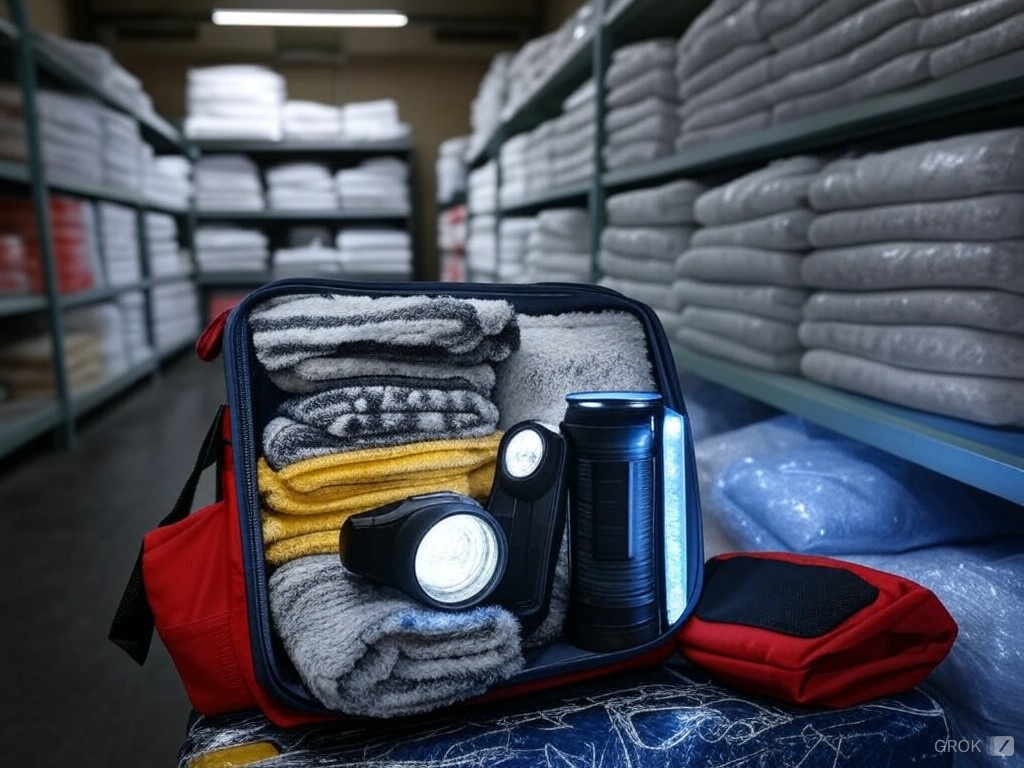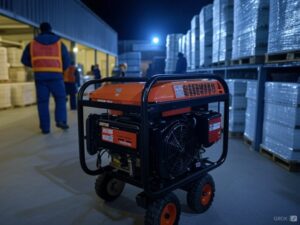This article outlines practical guidelines to help cold storage operators develop robust contingency plans that ensure business continuity and minimize disruptions during emergencies.
Why Emergency Preparedness Is Essential
- Preventing Product Loss: Temperature fluctuations can quickly render stored goods unusable, especially sensitive products like food and pharmaceuticals.
- Ensuring Safety: Protecting personnel and assets during disasters or system failures.
- Maintaining Reputation: A well-managed response can preserve customer trust and avoid reputational damage.
- Regulatory Compliance: Emergency plans are often required to meet industry standards and legal requirements.
Key Risks for Cold Storage Facilities
- Power Outages: Cold storage relies heavily on electricity to maintain consistent temperatures. Extended outages can lead to temperature spikes, jeopardizing stored goods.
- Equipment Failures: Malfunctioning refrigeration systems, sensors, or compressors can compromise temperature control.
- Natural Disasters: Floods, hurricanes, earthquakes, and extreme weather events can disrupt operations and damage infrastructure.
- Cyberattacks: Hacking of IoT-enabled systems could disable critical monitoring or control functions, leading to potential disruptions.
- Human Error: Improper handling during emergencies, such as leaving doors open for extended periods, can exacerbate temperature loss.
Developing an Emergency Preparedness Plan
- Risk Assessment
Identify and evaluate potential risks specific to your location, facility design, and operational processes. Consider factors such as:
- Frequency of power outages.
- Proximity to flood zones or seismic activity.
- Dependence on critical equipment or technologies.
- Backup Power Solutions
- Install Generators: High-capacity backup generators are a must-have for cold storage facilities. Ensure they are tested regularly and have sufficient fuel reserves.
- Renewable Energy Systems: Solar panels with battery storage can provide supplemental power during outages.
- Uninterruptible Power Supplies (UPS): Use UPS systems to maintain power for critical monitoring and control equipment during brief outages.
- Redundant Systems
- Equip facilities with backup refrigeration units to take over in case of primary system failure.
- Use dual-fuel generators to ensure versatility in fuel sources.
- Ensure data redundancy by storing monitoring logs in cloud-based systems that remain accessible during local disruptions.
- Temperature Management
- Implement thermal mass buffering using ice packs, thermal blankets, or eutectic plates to slow temperature rise during outages.
- Ensure all doors are properly sealed and limit access during emergencies to prevent cold air loss.
- Communication Plan
Develop a clear chain of command and communication protocols for emergencies:
- Provide staff with contact information for key personnel and emergency services.
- Use automated alerts from IoT systems to notify stakeholders of critical events.
- Establish a customer communication plan to inform clients about potential delays or disruptions.
- Emergency Training
- Conduct regular drills to familiarize employees with emergency procedures, such as power restoration or manual temperature monitoring.
- Train staff to handle temperature-sensitive products during emergencies, including transferring them to alternate storage or applying temporary cooling measures.
- Partnerships and Vendor Agreements
- Partner with third-party cold storage providers who can temporarily house goods during extended outages.
- Establish priority agreements with equipment repair vendors for expedited service.
- Inventory Prioritization
- Categorize inventory based on perishability and economic value.
- Develop plans to relocate or prioritize cooling for high-value or highly perishable items.
- Physical Security Measures
- Protective Barriers: Install flood barriers, wind-resistant structures, or earthquake retrofitting if relevant to local risks.
- Fire Suppression Systems: Implement systems that are safe for use around stored goods, like clean agent systems.
- Communication Systems
- Redundant Communication: Use multiple communication methods (radios, mobile phones, landlines) to ensure that staff can communicate during an emergency, especially if one system fails.
Leveraging Technology for Preparedness
- IoT-Enabled Monitoring: IoT devices can track temperature, humidity, and power status in real time, providing critical data during emergencies. Alerts can notify operators of deviations, allowing swift corrective action.
- AI-Powered Predictive Maintenance: Use AI to analyze equipment performance and predict potential failures before they occur, reducing the risk of unexpected breakdowns.
- Digital Twins: Simulate emergency scenarios with digital twin technology to test contingency plans and optimize response strategies.
Best Practices for Post-Emergency Recovery
- Assess Damage: Inspect equipment, infrastructure, and inventory for damage.
- Document Losses: Maintain detailed records for insurance claims and compliance reporting.
- Restore Operations Gradually: Reboot systems in phases to avoid overloading generators or electrical systems.
- Conduct a Post-Mortem: Analyze the response to identify gaps and improve future preparedness.
Benefits of Emergency Preparedness
- Reduced Financial Losses: Proper planning minimizes product spoilage and equipment damage.
- Faster Recovery: Facilities can resume operations quickly, maintaining service continuity.
- Regulatory Compliance: Meeting emergency preparedness standards avoids legal penalties.
- Enhanced Resilience: Facilities are better equipped to handle future disruptions.
Emergencies are inevitable, but the disruption they cause doesn’t have to be. By implementing a comprehensive preparedness plan, cold storage facilities can safeguard their operations, reduce risks, and protect valuable inventory. Leveraging modern technologies, regular training, and robust backup systems ensures facilities are resilient against the unexpected. In the world of cold storage, preparedness is the key to long-term success.







